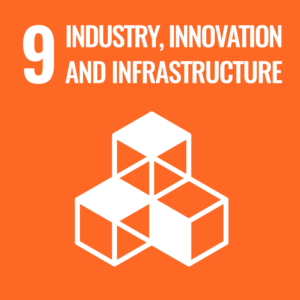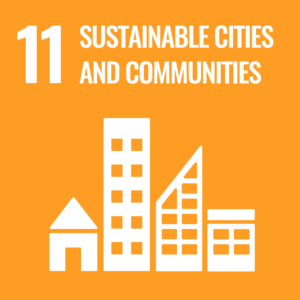 Hydrological risk in Italy: The Urgency of Adaptation and Prevention Policies
Hydrological risk in Italy: The Urgency of Adaptation and Prevention Policies
Hydrological disasters are happening more often and getting worse. This highlights the need for urgent plans to protect communities, save infrastructure, and prepare for a stronger future.
The country has dealt with floods, landslides, and other water-related dangers for a long time. Now, it urgently needs to put in place good plans to protect its people and buildings from these risks.
Recent natural disasters and climate change have made the urgent need to address this threat in a systematic and strategic manner increasingly evident.
The Vulnerability of Italy’s Terrain
Italy’s varied landscape, with mountains, coasts, and rivers, makes it prone to water-related risks. In the north, the mountainous areas can face sudden floods and landslides due to heavy rain and melting snow. Meanwhile, the flat plains in the Po Valley and along the Adriatic coast – where many people live – are at risk of river floods. These events can harm cities and farmland. Additionally, the coastal areas are vulnerable to storm surges and rising sea levels, adding to the challenges of managing hydrological risks in the country.
Moreover, according to data from the European Severe Weather Database, in 2022 Italy recorded a record value of about 2,000 extraordinary precipitations, including hailstorms and heavy rains.
The climate crisis in Italy is advancing more rapidly than the rest of the world. Italy is located in the heart of the climatic hot spot of the Mediterranean Sea. Indeed, Italy has experienced a temperature increase well beyond the global average and is now approaching +3°C compared to the pre-industrial period. In a country characterized by a ‘new climate,’ what events can we still consider exceptional and which ones not?
Challenges and Impact
Italy has faced many water-related disasters, causing big losses in people and money. Homes, buildings, and farmland have been destroyed, forcing communities to move and making it hard for people to earn a living. This has led to a long-lasting setback for the country. Also the environment has suffered, making it even more challenging for Italy to develop and protect its natural resources.
In July, at the National Climate Conference, Italy for Climate shared a report about how the climate crisis is connected to water resources. The report gave information on how the climate crisis is affecting Italy, giving important details about the changing situation. According to the European Environment Agency, from 1980 to 2020, extreme weather events led to around 90 billion euros in economic damages in Italy.
Recent events
This year, more than 20 rivers in Italy overflowed, causing hundreds of landslides, flooding homes, and damaging a lot of farmland.
In Emilia-Romagna, heavy rain in May, following a long dry spell, led to floods and landslides.
The Vice-president of the Emilia-Romagna Region, Irene Priolo, said that in May, the region got about 350 million cubic meters of water. This caused 23 rivers to flood, and there were around 1,000 landslides. This affected about 100 towns, and sadly, 15 people lost their lives.
In Milan, a strong storm brought heavy rains that overflowed the Seveso River early in the morning. This led to severe flooding in the northern part of the city, with cars being swept away on the streets, trees falling, roofs coming off, and roads collapsing.
Moreover, heavy rains and strong winds hit central Italy, causing widespread flooding in many areas of Tuscany. Unfortunately, eight lives were lost. The overflowing rivers and streams turned streets into rivers, and even three hospitals were affected by the floods.
These recent floods in Lombardy, Emilia-Romagna, and Tuscany have underscored the vulnerability of current infrastructure and the insufficiency of adequate preventative measures.
The Need for Adaptation and Prevention Policies
Given the frequent and serious water-related risks in Italy, there’s an urgent need for thorough policies to adapt and prevent these issues. Here are key areas to focus on:
- Early Warning Systems: Use advanced systems, like satellite monitoring and weather forecasting, to give timely alerts to communities at risk, helping them prepare for hydrological disasters.
- Infrastructure Resilience: Invest in strong infrastructure, including flood protection, sturdy riverbanks, and smart urban planning, to reduce the impact of floods and landslides, protecting lives and property.
- Ecosystem-based Approaches: Support natural methods like reforestation and sustainable land management to make ecosystems more resilient, decreasing the risk of landslides and promoting sustainable water management.
- Community Engagement and Education: Involve communities through awareness campaigns, education, and training programs. This empowers them to understand and respond effectively to water-related risks, creating a culture of readiness.
- Policy Integration and Governance: Strengthen national and regional policies to coordinate efforts among different groups. This ensures that adaptation and prevention measures are implemented and enforced effectively. Moreover, considering the urgency of the situation, proactive and collaborative efforts are crucial to address these challenges comprehensively.
The Way Forward
To tackle water-related risks in Italy, everyone—policymakers, scientists, communities, and businesses—needs to work together. It’s important to focus on being proactive in adapting and preventing issues, along with adopting sustainable development practices. This is key to lessening the impact of water disasters and creating a stronger, more sustainable future for Italy.
How Proaxxes can support companies willing to mitigate hydrological risk
Proaxxes provides businesses with vital Italian market reports, offering detailed analyses of water-related risks derived from meticulous research. These reports present a concise view of the present scenario, potential challenges, and emerging trends, enabling companies to make informed decisions and strategic moves to safeguard against hydrological threats.
CONCLUSION
In conclusion, the persistent hydrological risks demand immediate attention and robust policy interventions. Italy can make its communities stronger and protect the environment by focusing on strategies for adaptation and prevention. This will lead to sustainable development and a safer, more prosperous future.
Immediate attention and resolute policy interventions are imperative for mitigating the impact of hydrological disasters and building a resilient and sustainable Italy.
The path ahead requires collaboration, innovation, and a collective commitment to securing a safer and more prosperous future for generations to come.
Your interest and collaboration are crucial in advancing the dialogue and actions needed to build a more resilient and sustainable future for Italy. Reach out for more information or to engage in discussions about hydrological risks in Italy – let’s connect!









